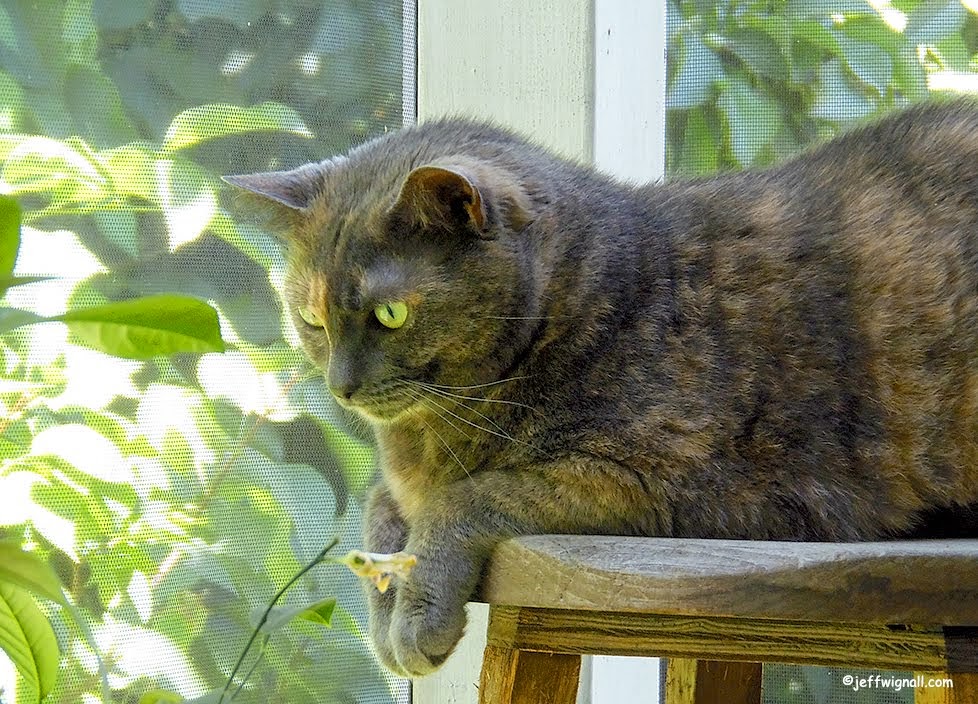 One of the questions that I hear a lot from folks that are new to digital cameras is: "Why do parts of my images flash at me when I'm reviewing photos on the LCD?" The answer is because they have inadvertently turned on the highlight warning or "clipping" warning. Clipping is a term used in digital photography that essentially means the highlights are burned out and that there is no recognizable detail in those areas. Most digital cameras (at least most DSLRs) have a feature that you can turn on or off that flashes to warn you that you have overexposed areas; typically these clipped highlights flash as small dark patches wherever there is a total loss of highlight detail.
One of the questions that I hear a lot from folks that are new to digital cameras is: "Why do parts of my images flash at me when I'm reviewing photos on the LCD?" The answer is because they have inadvertently turned on the highlight warning or "clipping" warning. Clipping is a term used in digital photography that essentially means the highlights are burned out and that there is no recognizable detail in those areas. Most digital cameras (at least most DSLRs) have a feature that you can turn on or off that flashes to warn you that you have overexposed areas; typically these clipped highlights flash as small dark patches wherever there is a total loss of highlight detail.But isn't that what the histogram is for? Yes, OK, you can also tell when you have burned out highlights by looking at your histogram for any given shot. On the histogram display what you would see is that part of the graph is butted up against the right side of the display (the right side is the highlight region), but what it won't tell you is where those areas are in the image. The highlight warning provides that information by flashing at you. This is an extremely useful feature because once highlights are blown out, there is very little chance to bring them back. In the photograph of the white ibis shown here, if you look at the top of the head (just above the eyes) you'll see that there is a patch of brilliant white that is missing all detail. I've tried bringing the detail back to that area with a combination of curves controls and highlight masking, but the detail is pretty much lost forever.
So what do you do if you get a clipping warning? The only thing you can do is to use your exposure compensation feature (or, if you're shooting in manual, reduce the exposure by using a smaller aperture or faster shutter speed) to reduce exposure. Yes, this will cause more of your image to shift to the shadow side of the histogram, making everything else proportionately darker, but it's far easier to open up shadow areas than it is to bring back lost highlights. I can bring shadow detail back in even the darkest parts of an image, but with highlights, once they're gone, they're gone. This problem is worse, of course, with subjects like the ibis that are very light in tone (skies are also a problem); clipping is not a problem with midtone objects.
The real question when you see the highlights flashing, however, is whether you really need detail in those areas. In this shot, I would say yes, I wanted detail and because I wasn't paying attention to the warnings, I lost a great shot. Had I paused for a moment to review the clipping, I I would have seen the warning and cut my exposure (possibly even using an accessory flash to compensate, being careful not to overexpose with the flash). But there are times when I've seen a clipping warning and ignored it. If you're shooting a winter landscape and a small unimportant area of white snow is flashing, for instance, you might be able to ignore it. Or if a white sailboat in a harbor is small and unimportant and it's flashing, again, you might decide to let it go.
The key thing about the highlight-warning feature is that it puts you in control of making that decision rather than just reading the bad news from the histogram after you've made your shot. If you suspect some highlights might cause problems, just shoot a test frame and turn on the warning (see your manual for instructions). If there are no warnings or if the clipped areas are not important, keep shooting. If you're getting dazzled by flashing areas, reduce the exposure. The histogram itself is a nice feature because it tells you if you have a lot of areas lost to shadow (left side) or highlights (right side) but again, it takes the highlight warning to show you were those lost highlights are precisely.






No comments:
Post a Comment